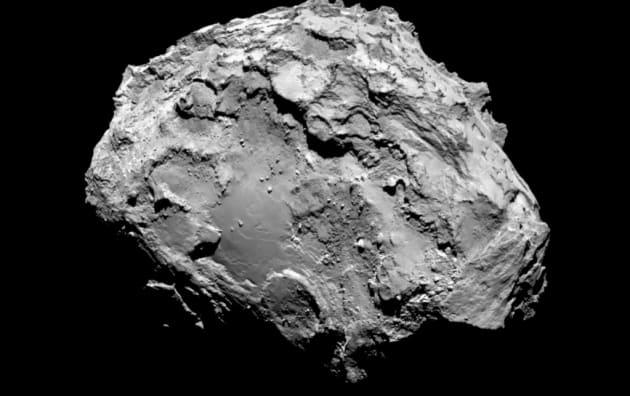Astronomers find pure oxygen leaking from Rosetta's comet

European Space Agency astronomers, with the help of the Rosetta spacecraft, have made a remarkable discovery that could fundamentally alter our understanding of how the solar system formed. They have detected large amounts of pure oxygen (O2) leaking from comet 67P/Churyumov-Gerasimenko. Oxygen is a pretty common element, but because it reacts so easily with other elements it's almost always found in mixed molecules like carbon monoxide (CO), carbon dioxide (CO2) or water (H2O).

Using the Rosetta's onboard sensors, the ESA confirmed that the amount of oxygen in the gas cloud surrounding 67P was stable. That indicates that the element had become trapped in the comet's gravity as the comet formed an estimated 4.6 billion years ago. And the fact that it's still there challenges long-held beliefs that the solar system was once much hotter but has since cooled. However, were that true, the molecular oxygen in this comet would not be there.
What's more, this oxygen could actually hinder the search for extraterrestrial life. Exo-fauna hunters view the presence of oxygen and methane as positive hints for life on distant planets since both molecules are often produced by primitive life forms. But if the oxygen on 67P is as old as the ESA thinks it is, that would mean the molecule was present in the early solar system, eons before life first took hold. Looks like we're going to need a better indicator for finding life beyond our planet.
[Image Credit: Handout via Getty Images]

